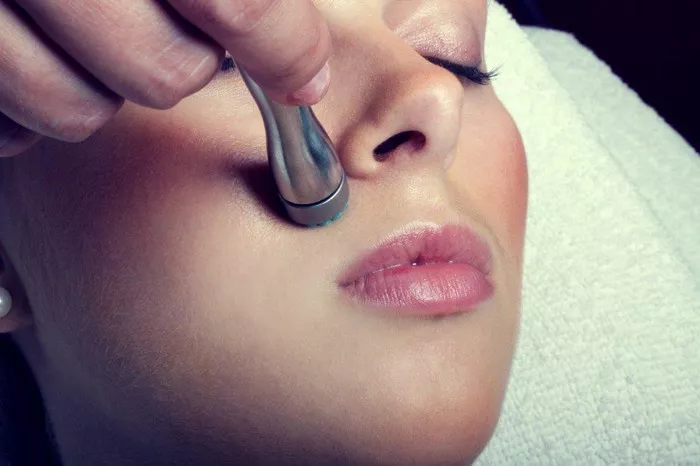Microdermabrasion is a popular cosmetic procedure known for its ability to exfoliate and rejuvenate the skin, promoting a smoother and more youthful complexion. If you’re considering microdermabrasion as part of your skincare routine, you may wonder how often you can safely undergo this treatment. In this article, we will provide a comprehensive guide to help you understand the optimal frequency of microdermabrasion treatments and how to achieve the best results for your skin.
What Is Microdermabrasion?
Microdermabrasion is a non-invasive procedure that involves the mechanical exfoliation of the outermost layer of the skin. It utilizes a specialized device to gently remove dead skin cells, revealing a fresh and rejuvenated complexion. Microdermabrasion can help address various skin concerns, such as fine lines, wrinkles, acne scars, hyperpigmentation, and uneven skin texture.
Factors Affecting the Frequency of Microdermabrasion
The frequency at which you can undergo microdermabrasion treatments depends on several factors, including:
Skin Type and Condition: The condition of your skin plays a crucial role in determining the optimal frequency of microdermabrasion. Individuals with more resilient and healthy skin may be able to tolerate more frequent treatments, while those with sensitive or compromised skin may require longer intervals between sessions.
Treatment Intensity: The intensity of the microdermabrasion treatment also influences the recommended frequency. Higher intensity treatments, such as those using more abrasive crystals or diamond-tipped wands, may necessitate longer intervals between sessions to allow the skin to recover fully.
Treatment Goals: Your specific skincare goals will also impact the frequency of microdermabrasion treatments. For example, if you are targeting more stubborn skin concerns or seeking significant improvement, you may need to undergo treatments more frequently. On the other hand, if you are using microdermabrasion as part of a regular maintenance routine, less frequent sessions may be sufficient.
Combination with Other Treatments: Microdermabrasion can be combined with other cosmetic treatments, such as chemical peels or laser therapy. The timing and frequency of these combined treatments will depend on the specific procedures and the advice of your skincare professional.
Recommended Frequency Guidelines
While the optimal frequency of microdermabrasion treatments can vary depending on individual circumstances, here are some general guidelines to consider:
Initial Series: For individuals who are new to microdermabrasion or have specific skin concerns, it is common to undergo a series of treatments spaced approximately two to four weeks apart. This allows for cumulative benefits and optimal results.
Maintenance Treatments: Once you have completed the initial series of treatments, you can transition to maintenance sessions. Typically, maintenance treatments are performed every one to three months, depending on your skin’s needs and response to the procedure. Consulting with your skincare professional will help determine the ideal interval for your specific case.
Skin Sensitivity and Reactivity: If you have sensitive or reactive skin, it is generally recommended to have longer intervals between microdermabrasion sessions. This allows your skin to recover fully and minimizes the risk of irritation or adverse reactions.
Consultation with a Skincare Professional: It is essential to consult with a qualified skincare professional to assess your skin type, condition, and treatment goals. They can provide personalized recommendations based on your specific needs, ensuring the optimal frequency and timing of your microdermabrasion treatments.
Post-Treatment Care and Skin Readiness
Proper post-treatment care is crucial for optimizing the results of microdermabrasion and ensuring your skin is ready for subsequent sessions. After each treatment, follow these guidelines:
Protect from Sun Exposure: The treated skin may be more susceptible to sun damage, so it is essential to apply a broad-spectrum sunscreen with a high SPF and avoid prolonged sun exposure.
Avoid Harsh Products: Refrain from using harsh or abrasive skincare products, such as exfoliants or scrubs, for a few days after the treatment. Opt for gentle and hydrating skincare products to support the healing process.
Hydrate and Moisturize: Keep your skin well-hydrated by drinking plenty of water and using moisturizers suitable for your skin type. Hydration helps maintain skin health and supports the recovery process.
Listen to Your Skin: Pay attention to how your skin responds to the treatment. If you experience excessive redness, irritation, or prolonged sensitivity, it may be an indication that you need to extend the intervals between your microdermabrasion sessions.
Conclusion
The frequency of microdermabrasion treatments should be personalized to meet your unique skincare needs and goals. Consulting with a skincare professional is essential to assess your skin’s condition, recommend the appropriate treatment frequency, and monitor your progress.
By following the recommended guidelines and taking proper care of your skin before and after each treatment, you can achieve the best results with microdermabrasion. Remember, every individual’s skin is different, and what works for one person may not work for another. Be patient, listen to your skin, and enjoy the rejuvenating benefits of microdermabrasion as part of your skincare routine.


